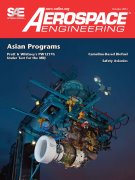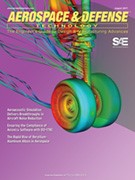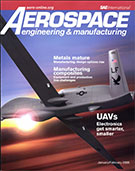Magazine

AEROSPACE ENGINEERING 2013-04
2013-04-01
PEFCs to transform UAVs Advancements in polymer electrolyte membrane fuel cells have resulted in longer endurance missions for smaller UAVs as well as an enabler for electric aircraft that require vertical takeoff and landing capability. Hovering aircraft programs The AW609 tiltrotor and the X3 compound helicopter offer different technology solutions to the challenge of achieving higher speeds and higher quality point-to-point air transport.



















